Infrastructure Week 2024
From Twigs to Towers: Extreme Examples of Complex Structures of Bird Nests
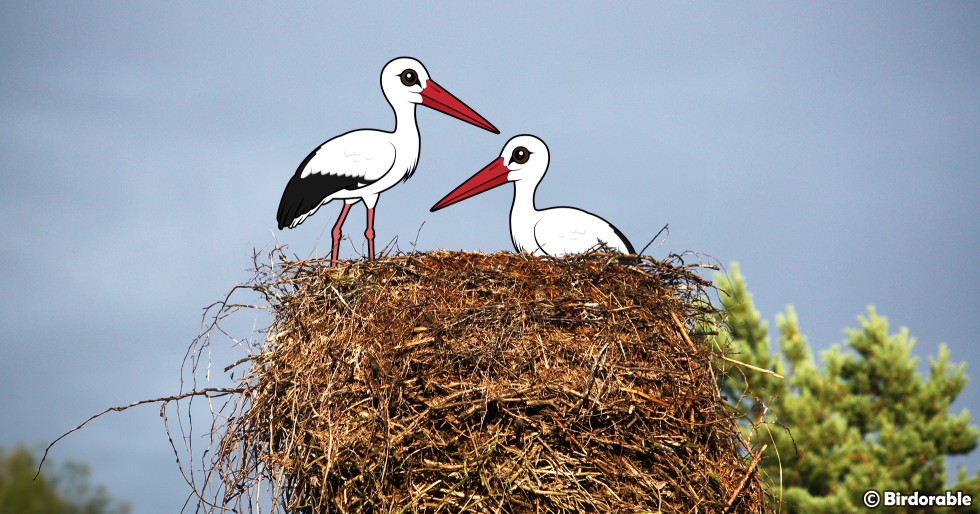
White Storks build their stick nests elevated off the ground in trees, on roofs, utility poles, or other high locations. These large nests can reach up to 6 feet in width and 9 feet in depth. Stork pairs nest either solitarily or in small groups.
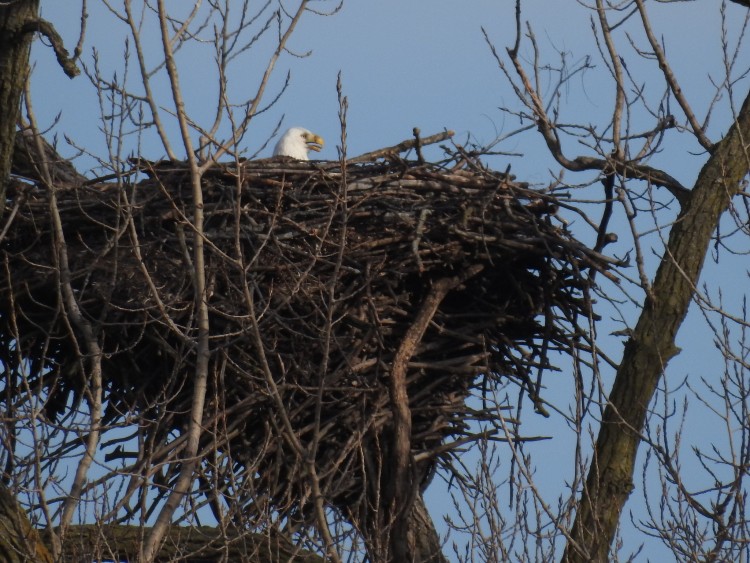
Bald Eagle nest by Elizabeth Pector (CC BY 2.0 Deed)
Here are several examples of birds known for constructing some of the most elaborate nests:
-
Bald Eagle - These majestic, powerful raptors build the largest nests of any bird in North America. The nests are reused and added onto for many years by the same bonded pair of adult birds. The nests are massive constructions of sticks, vegetation, and debris, sometimes measuring over 9 feet in diameter and weighing up to a ton. The largest noted Bald Eagle nest was recorded in St. Petersburg, Florida, was 10 feet in diameter and 20 feet tall!
-
Montezuma Oropendola - These tropical birds create long, hanging nests from tree branches. Their nests can be up to 6 feet long and are woven from fibers and vines. The colony trees where these birds nest can have dozens of these pendulous nests hanging from them, creating a striking visual.
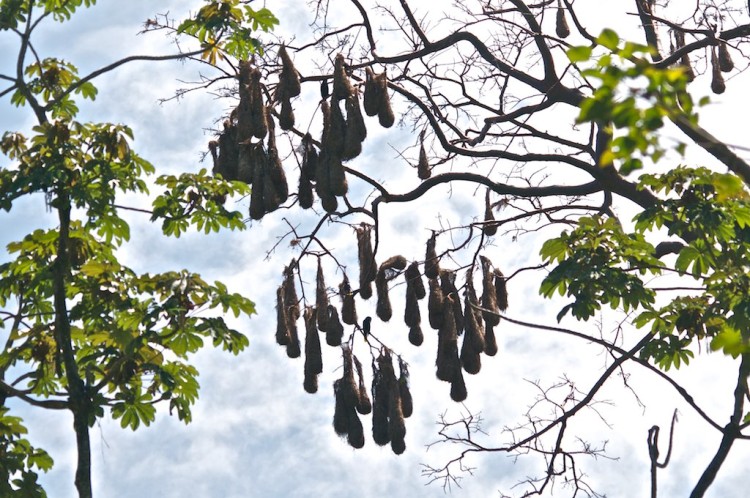
Montezuma Oropendola nests by Brian Ralphs (CC BY 2.0 Deed)
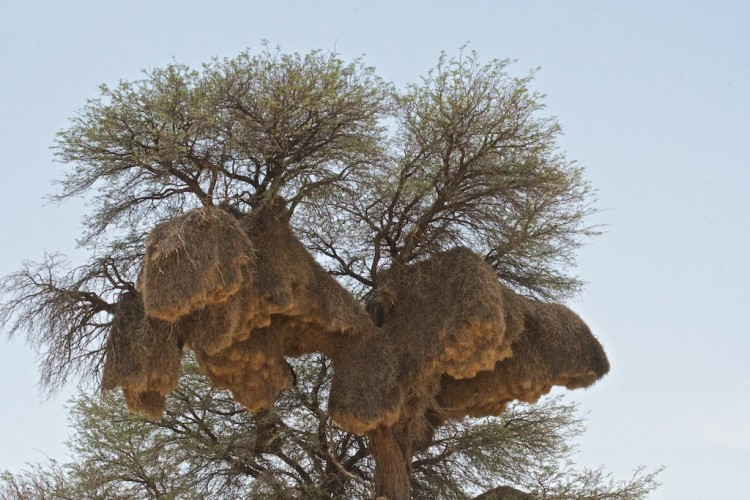
Sociable Weaver nests by Brian Ralphs (CC BY 2.0 Deed)
- Sociable Weaver - These birds build enormous communal nests which may be used by hundreds of birds. The nests are complex structures made of sticks and grass with separated nesting chambers that are lined with soft materials.
-
Hamerkop - This bird’s nest is a massive, domed structure made from sticks kept together with mud, often built in the fork of a tree. The nest can be up to 5 feet across and is roofed with a thick layer of sticks, featuring a single entrance at the underside of the nest.
-
Hornbills - Many species of Hornbill, like the Great Hornbill, exhibit a remarkable nesting strategy where the female seals herself inside a tree cavity with mud and fruit pulp, leaving only a slit through which the male feeds her and the chicks. This unique method protects them from predators and environmental elements, showcasing an ingenious approach to nesting security.
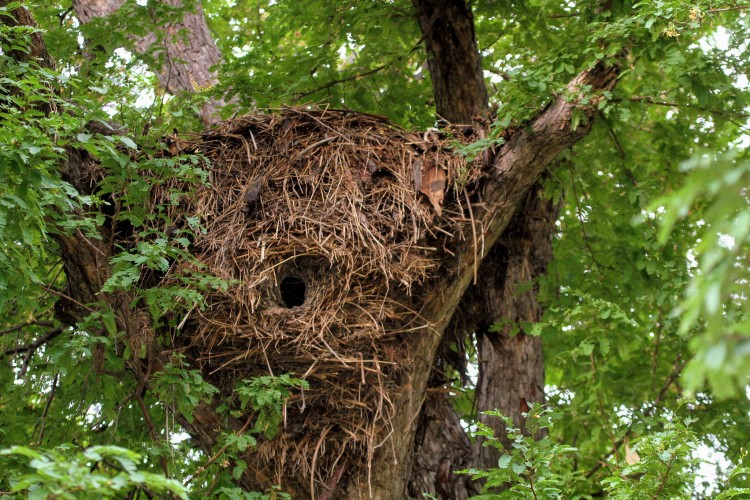
Hamerkop nest by Greg Schechter (CC BY 2.0 DEED)
These examples illustrate the diverse and sophisticated techniques birds employ in nest building, showcasing their natural ingenuity and adaptability. Each species’ nesting style is perfectly adapted to their environmental needs and breeding behaviors, demonstrating the incredible variety in avian architecture.
Special Infrastructure shout-out to Bowerbirds
Bowerbirds are known for their construction prowess as well, but their work is solely for mating, not nesting. Male birds in the Bowerbird family create structures called "bowers" which are designed for attracting mates. Bowers are constructed around a sapling or a wall of sticks are and decorated with twigs, leaves, and various brightly colored objects they collect like shells, berries, and flowers. The shape and style of the bower vary by species, with some creating avenue-like paths lined with decorations, while others build more hut-like structures.





Comments
Leave a comment
Thank you!